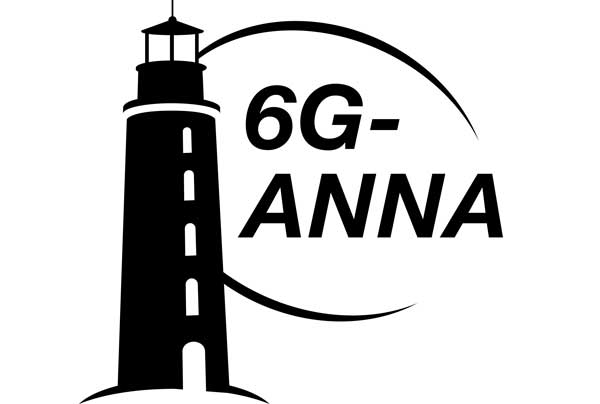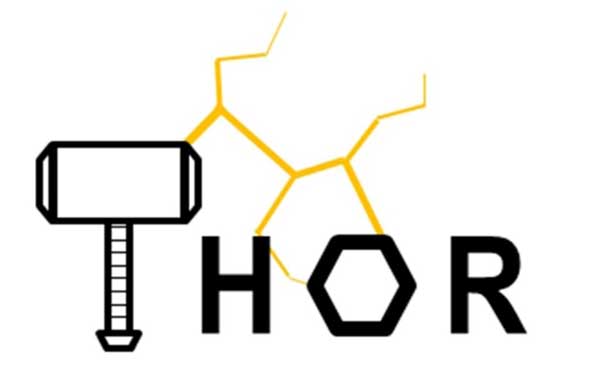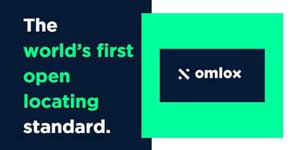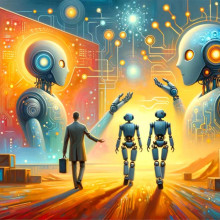6G network | The next mobile generation
- Details
- Hits: 7807
While some are still in the LTE or 4G network and that 5G Mobile network already masters its introduction with flying colors, throws the 6G network its shadow to around 2030 already ahead. We present new developments for the upcoming mobile communications standard like that Lighthouse project 6G-ANNA or the world's first bidirectional radio link with Internet connection from the University of Stuttgart. Also the Karlsruhe Institute of Technology MIGRATORY KIT has the 6G network in its sights and is presenting a Concept for the highest data transmission rates in the Terahertz Communication.

Contents
- Lighthouse project to promote 6G in Germany
- 6G network Milestone in terahertz communication
- Terahertz receiver for 6G network with the highest data rate
- What do the 1G to 6G network technologies mean?
- When will 6G come?
Lighthouse project to promote 6G in Germany
 17.08.2022/XNUMX/XNUMX | The three-year lighthouse project 6G ANNA was launched by the Federal Ministry of Education and Research (BMBF). Under the leadership of Nokia, a consortium of 29 companies and research institutes is to advance the development, standardization and implementation of the sixth generation of mobile communications (6G). Rohde & Schwarz contributes to this project with its already extensive research on 6G and related technologies.
17.08.2022/XNUMX/XNUMX | The three-year lighthouse project 6G ANNA was launched by the Federal Ministry of Education and Research (BMBF). Under the leadership of Nokia, a consortium of 29 companies and research institutes is to advance the development, standardization and implementation of the sixth generation of mobile communications (6G). Rohde & Schwarz contributes to this project with its already extensive research on 6G and related technologies.
The lighthouse project 01.07.2022G Access, Network of Networks and Automation, 6G ANNA for short, started on July 6st, 6, is part of a broader initiative to develop a XNUMXG platform. That from the BMBF project financed with 38,4 million euros runs for a period of 3 years. In addition to Rohde & Schwarz, companies such as Bosch, Airbus, Ericsson, Siemens and Vodafone, innovative start-ups, research institutes and renowned universities are involved.
Rohde & Schwarz has long been closely involved in research into 5G successor technologies and 6G. The company actively supports the ongoing basic research in 6G organizations, universities and research institutes in Europe, the USA and Japan. The significant work already done should play an important role in the development of 6G. These include, for example, (sub)THz communication, joint communication and sensing (JCAS), machine learning (ML) and Artificial intelligence (AI) or Reconfigurable Intelligent Surfaces (RIS). The first global specification of 6G is expected within the next 6 to 8 years expected. Commercial adoption of the technology will happen around 2030.
6G network Milestone in terahertz communication
11.07. 2022 | The scientists of University of Stuttgart have recently as part of the international project Thor presented the world's first bidirectional terahertz radio link with internet connection. It is intended to serve as a "backhaul" link for future mobile communications applications. The Institute for Robust Power Semiconductor Systems (ILH) is part of a consortium with twelve partners from five countries. The TU Braunschweig and Waseda University, Japan are leading the project.
 Self-driving cars with Continental | Nvidia supercomputer
Self-driving cars with Continental | Nvidia supercomputer
High-bit-rate data cannot always and everywhere be transmitted via fiber optic cable. In remote locations, in densely built-up cities and natural obstacles, in the event of a disaster or at mass events, it is often not possible to connect every base station of the mobile network by cable and thus provide enough bandwidth. Terahertz radio links, which can bridge distances of up to 1 km, offer an alternative here. This allows important backhaul connections between mobile radio cells and mobile radio network nodes without having to undertake road construction measures.
Large data transfers without fiber optic cables
 The 5G mobile communications standard is already producing high data rates, which will continue to increase in the future 6G network. So far, the 5G data rates have spoken for a fiber optic connection of the stations to the data network. As part of the Thor project, a bidirectional terahertz radio link developed with network connection for these high amounts of data. The frequency range used above 300 gigahertz (GHz) offers sufficient spectrum for large data rates.
The 5G mobile communications standard is already producing high data rates, which will continue to increase in the future 6G network. So far, the 5G data rates have spoken for a fiber optic connection of the stations to the data network. As part of the Thor project, a bidirectional terahertz radio link developed with network connection for these high amounts of data. The frequency range used above 300 gigahertz (GHz) offers sufficient spectrum for large data rates.
The Thor backhaul route offers a real bidirectional data connection for the first time worldwide. It links the IT center and the Oker high-rise of the TU Braunschweig via a distance of 160 m. With it, data of 2 x 20 Gbit/s net can be transmitted with a bandwidth of 2 x 8,64 GHz. The developed terahertz radio link is so scalable over the bandwidth that even higher data rates are feasible.
"We have implemented an application-oriented complete solution that can be used as a backhaul connection in the data network in the near future," says Professor Thomas Kürner from the TU Braunschweig, leader of the European part of the project. As the first backhaul connections of this type, their functionality corresponds to the IEEE 802.15.3 standard, which was developed prior to the start of the project with the significant participation of the TU Braunschweig and some Japanese partners.
 Open source mesh network for today's smart city
Open source mesh network for today's smart city
The researchers at the University of Stuttgart have developed the new, broadband transmission and reception circuits based on powerful transistor technologies from the Fraunhofer Institute for Applied Solid State Physics (IAF). Together with the French partners IEMN and University of Lille they have it Terahertz radio at 300 GHz realized, which enables the world's first network connection of a Terzhertz radio link through the parallel processing of up to four gigabit modems.
Research technological requirements for 6G network
The Thor project was supported by the EU through the research framework program Horizon 2020 and funded by the National Institute of Information and Communications Technology in Japan with EUR 3 million. The project duration was 4 years. The research work is now being continued at the University of Stuttgart as part of the BMBF-funded project Open 6G Hub. The ILH, together with the Institute for Telecommunications (INÜ), is researching the technological requirements for the 6G network.
Terahertz receiver for 6G network with the highest data rate

06.10.2020 | While many are still in the LTE or 4G network, mobile operators like O2, Huawei or Telekom are now establishing the 5G mobile network, the Karlsruhe Institute of Technology has MIGRATORY KIT already that 6G network in sight. A new concept enables the highest data transmission rates to date in the Terahertz communication at low cost.
The sixth generation 6G mobile network of the future will consist of many extremely small radio cells. Frequencies in the Terahertz range THz.
Researchers at KIT have developed a novel concept for simple and inexpensive terahertz receivers for the successor to the 5G cellular network. They consist of just one diode, which they combine with a special signal processing method. In the experiment, a data transmission rate of 115 Gbit / s on a carrier frequency of 0,3 THz can be achieved over a distance of 110 m, reports the team in Nature Photonics Journal (DOI: 10.1038/s41566-020-0675-0).
After the 5G is before the 6G
The 6G cellular network promises significantly higher data transmission rates, shorter delay times and a greater density of end devices. In addition, the sixth generation of artificial intelligence will integrate AI. This z. B. Devices in the Internet of Things IoT or self-driving vehicles coordinate.
 Cybersecurity for IT security before quantum computer intelligence
Cybersecurity for IT security before quantum computer intelligence
"In order to serve as many users as possible at the same time and to transfer large amounts of data as quickly as possible, the wireless networks of the future must consist of numerous small radio cells," explains Professor Christian Kooswho together with his colleague Professor Sebastian Randel researches technologies for 6G at KIT.
Base stations on street lights
Short ways in these Radio cells combine high data rates with minimal energy consumption and low electromagnetic immission. The only small base stations required for the successor to 5G can be attached to street lamps, for example.
The connection of the individual cells requires powerful radio links for 6G networks, on which dozens or even hundreds of gigabits per second (Gbit/s) can be transmitted on one channel. Frequencies in the THz range are suitable for this purpose electromagnetic spectrum between the microwaves and the infrared radiation.
 Location technology standard Omlox with UWB, RFID, 5G, GPS
Location technology standard Omlox with UWB, RFID, 5G, GPS
However, the recipients are still comparatively complex and expensive. They often represent the bottleneck for the achievable bandwidth. Researchers at the institutes for microstructure technology IMT, Photonics and quantum electronics IPQ, Microstructure technology IMT and accelerator physics and technology IBPT of KIT, together with the diode manufacturer Virginia Diodes VDI in Charlottesville, USA, designed a very simple and inexpensive receiver for THz signals and presented it in the journal Nature Photonics.
Highest wireless THz transmission so far
"A single diode serves as the receiver, which is used to rectify the terahertz signal," explains dr Tobias Harterthat the recipient shares with his colleague Christopher Fuller as part of his dissertation.
It is a Schottky diodethat offers high speed. It acts as an envelope detector and recovers the amplitude of the THz signals. For the correct decoding of the data signal, however, the phase of the THz wave that changes over time is still required, which is usually lost during rectification.
The researchers therefore use digital methods for signal processing combined with a special class of data signals. With them the phase is by means of Kramers-Kronig relations can be reconstructed from the amplitude. The Kramers-Kronig relation describes a mathematical relationship between the real and imaginary part of an analytical signal.
With the new receiver, the scientists have achieved a data transmission rate of 115 gigabits per second on a carrier frequency of 0,3 THz over a distance of 110 m. "This is the highest data ratewhich has so far been demonstrated with wireless terahertz transmission over more than 100 meters, ”explains Mr. Füllner. The THz receiver developed at KIT has a simple structure and is suitable for inexpensive production in large numbers.
General technical knowledge
What do the 1G to 6G network technologies mean?
1G network
The 1G network and thus the 1st generation of mobile communications existed in Germany long before there were cell phones, namely from 1958. The first mobile fun standard only became suitable for everyday use in the 1980s. No data could be transmitted yet and the voice was transmitted analogously.
2G network
The introduction of digital voice transmission then lasted more than three decades and was successful 1992 with the introduction of the 2G network. This made sending SMS messages socially acceptable. The data transmission was 0,25 Mbit/s, with which e-mails could be sent.
3G network
A full twelve years later 2004 the 3G network was established with a maximum data rate of 42,2 Mbit/s. For the first time, a smartphone, which was new at the time, could be used to surf the web, make video calls and stream.
 smart city | Mega buildings, infrastructure, products + technologies
smart city | Mega buildings, infrastructure, products + technologies
4G network
With the introduction of the 4G network, in 2010 the data rates are increased more than tenfold. Up to 500 Mbit/s met the Full HD age of mobile phones. New technologies such as the cloud and film downloads in just 30 s at a quality of 1080 px were now possible.
5G network
The current 5G network has been around since 2020 and has not yet been implemented everywhere. Broadband Internet with speeds of up to 10.000 Mbit/s bring a huge leap in data into the increasingly networked and increasingly digitized life of all areas. Industry 4.0 and digital transformation require real-time data transmission, as does the Internet of Things, which is increasingly connecting people with machines, devices, consumer goods and the like.
6G network
The 6G network is said to be about to start today 2030 ahead. It should enable hologram telephony or autonomous robotics in everyday life. The data rates achieved so far are expected to increase a hundredfold and will then be in the terabit range.
When will 6G come?
The introduction of the 6G standard is still in a very early phase.
In the field of 6G technology, research is currently focused on the design and development of networks and devices that can support the extremely high data transfer rates and very low latencies that 6G promises.
While it's hard to say exactly when the next generation of networks, i.e. 6G, will be fully commercialized, experts estimate that 6G networks and 6G-enabled smartphones could be in widespread use sometime in the 2030s.
However, it should be noted that these estimates are based on current advances in 6G research and may change over time.
You might also be interested in...

Artificial Intelligence | trends and developments

Angela Struck is editor-in-chief of the development scout and freelance journalist as well as managing director of Presse Service Büro GbR in Ried.
